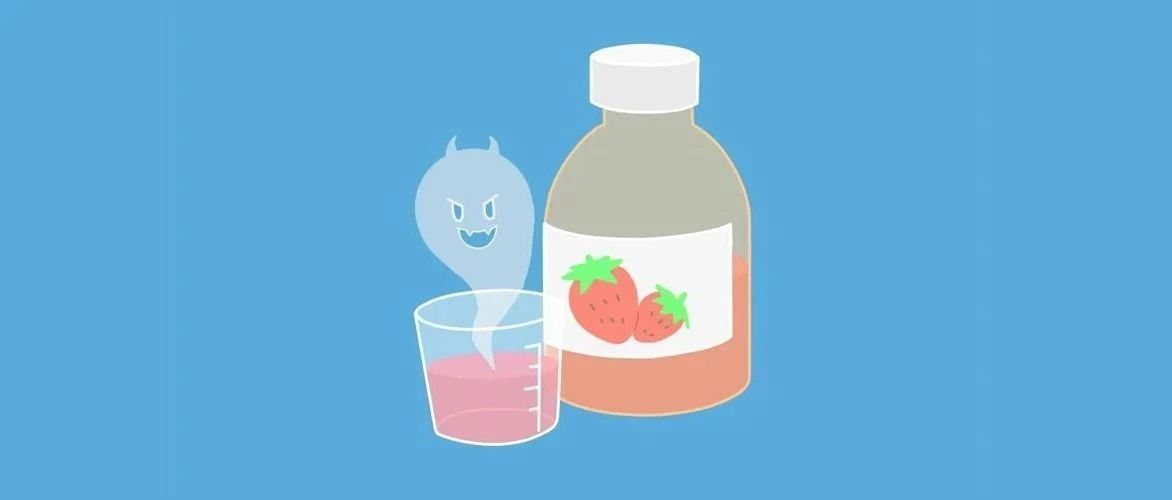
It's all made into strawberry flavor, how can the medicine still taste so bad!
In everyone's childhood memories, there may be a fruit-flavored potion that makes you want to throw up.
(first in fruit shell)
everyone's childhood memories may contain a fruit-flavored potion that makes you want to throw up.
in the pharmaceutical world, fruit-flavored and pink packaging always seems to be full of pitfalls. A bag of granules may smell sweet and sweet, but it can knock people down at the moment of entrance, making people sincerely sigh: strawberry-flavored food can be so bad!
it has been made into strawberry flavor and orange flavor. Why does the medicine still taste bad?
(author's drawing)
Why does the medicine taste bad?
first of all, there is no "delicious" reason for drug ingredients. After all, in the process of research and development, people focus on what effects these ingredients can have on the human body, rather than thinking about their taste.
complaints about the taste of drugs often focus on bitterness, which makes some sense from an evolutionary point of view. The perception and resistance to bitterness are considered to be an adaptive revolutionary product that can help humans avoid toxic substances in nature. On the other hand, "toxic" means "physiologically active", that is, poisonous things always have some effect on people's physiology-sometimes this effect may be exactly what is needed to treat diseases. Therefore, bitter natural poisons are often transformed into drugs, while retaining the characteristics of bitterness. Of course, this is not absolute.
(in addition to bitter taste, bad smell and strange texture also contribute. For example, montmorillonite powder makes many people experience the feeling of eating dirt.)
strawberry-flavored medicine is more likely to taste bad
besides the ingredient itself, the dosage form also greatly affects the bad taste of the drug. It is easiest to avoid bad taste in tablets, capsules, which will not immediately spread in the mouth of the dosage form, if you add coating, you can better avoid the perception of bitterness and bad smell. In this case, it doesn't matter if you don't add additional ingredients to improve the flavor.
of course, these tablets and capsules certainly won't meet all the needs. Children's dosage forms are often made into liquids or powders to avoid difficulty in swallowing and to facilitate dose adjustment. And these dosage forms can easily expose the bad side of the drug. Even with the addition of sweeteners and flavor substances, the bitterness, smell, or strange texture of the drug ingredients are still difficult to completely cover-up. So in a sense, it is normal that "strawberry-flavored medicine" tastes worse than "tasteless medicine".
to make drugs absorb and work faster, some tablets are also specially designed to spread quickly in the mouth, and these dosage forms also have a high "bad taste risk". The word "dispersible tablet" is often seen in complaints about the taste of drugs, and dispersible tablets are such "easy-to-eat" tablets. According to Pharmacopoeia, dispersible tablets are "tablets that can disintegrate quickly and disperse uniformly in water", and "dispersion" can help insoluble drugs dissolve better. Since the rapid dispersion of water, it is also easy to spread in the mouth, the contact area with the tongue is larger, and the "flavor" is released more fully.
making it too delicious also carries risks
if you increase the efforts to improve the taste, you should be able to make the drug taste correction a little more successful-but too much success is not necessarily a good thing. If the taste of drugs is adjusted to being as good as candy and drinks, then the risk of children taking drugs by mistake will increase, as has happened in history.
in 1947, pharmaceutical company Baoya (Plough) redesigned the dosage form of the old drug aspirin and introduced a low-dose aspirin tablet that was seasoned and chewable. In the years that followed, Bayer and other companies launched similar products, and these seasoning tablets, designed to attract children, became known as "candy aspirin" (Candy Asprin).
(candy aspirin) was advertised in the newspaper in the 1950s. The slogan emphasizes that the drug "tastes like candy". Published in the Eagle in 1952
Wanna buy a flirty cheap plus size wedding dresses and flaunt your luscious curves? Enjoy the combination of simplicity and utility.
at the time, these sweet-smelling pills were a great commercial success but also brought worrying problems: just a few years later, the American Academy of Pediatrics recorded a significant increase in cases of aspirin overdose in children. A 1956 analysis of childhood poisoning said that children took the initiative to look for and eat these aspirin tablets because they "liked the taste." In 1955, FDA called a special meeting on the safety of candy aspirin. Finally, under pressure, drug companies added safety caps to bottles in children's dosage forms.
what can I do?
do you find the medicine hard to swallow? Try the following tips:
drink plenty of water to let the medicine pass through the mouth quickly.
use ice to make taste change
pinch your nose to deal with bad smells
sometimes you can use food or drink to mask the taste of medicine. but be sure to consult your doctor or pharmacist first.